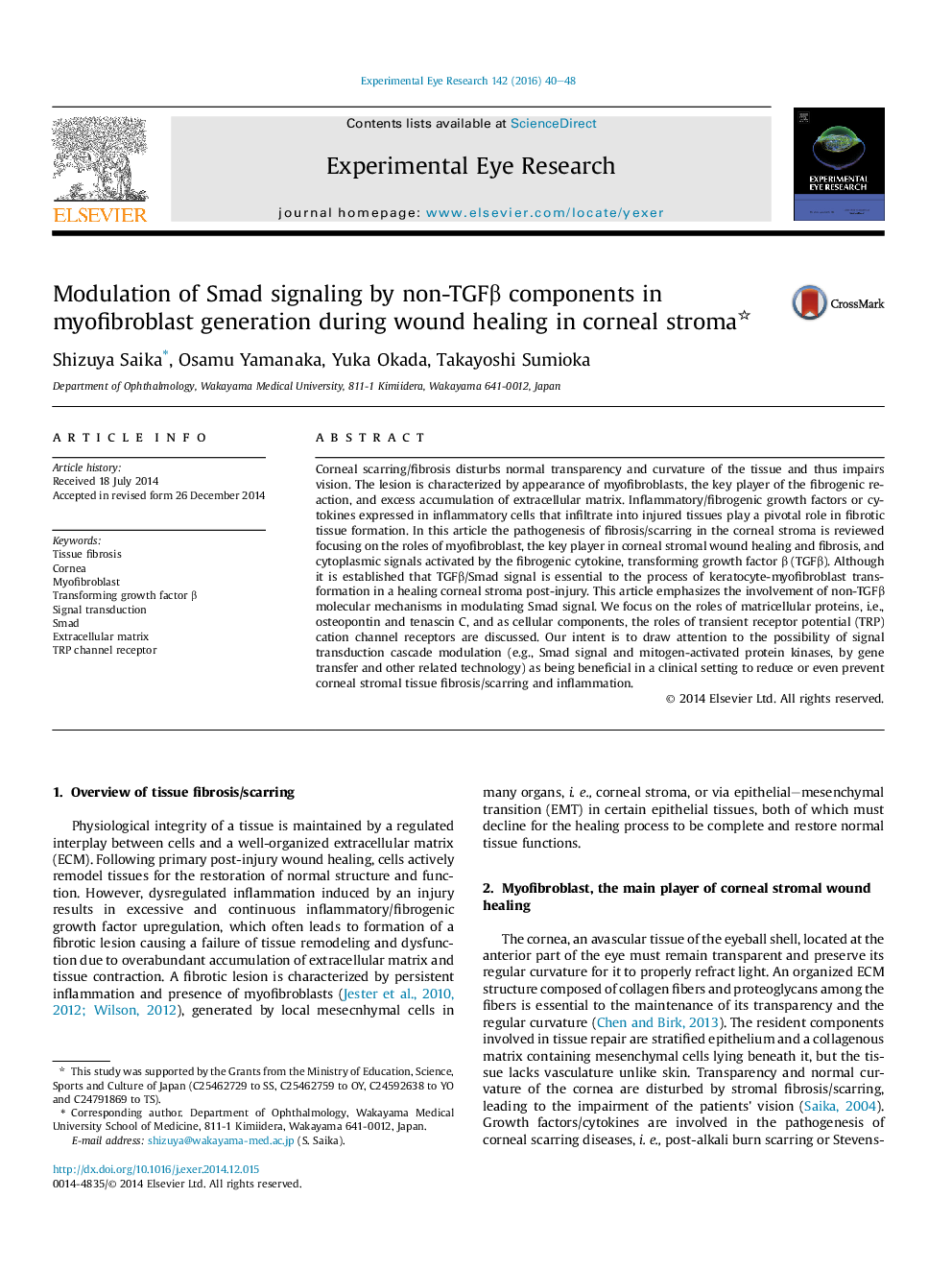| Article ID | Journal | Published Year | Pages | File Type |
|---|---|---|---|---|
| 4011112 | Experimental Eye Research | 2016 | 9 Pages |
•Myofibroblast plays an important role in the process of scarring in the corneal stroma.•Transforming growth factor β (TGFβ)/Smad signal modulates keratocyte-myofibroblast conversion.•Macrophages are the major source of TGFβ in a corneal stroma under the process of wound healing and inflammation.•Matricellular proteins, i.e., osteopontin and tenascin C, modulate TGFβ/Smad signal and myofibroblast generation.•Signals via TRP cation channel receptors are required for full activation of Smad and myofibroblast formation.
Corneal scarring/fibrosis disturbs normal transparency and curvature of the tissue and thus impairs vision. The lesion is characterized by appearance of myofibroblasts, the key player of the fibrogenic reaction, and excess accumulation of extracellular matrix. Inflammatory/fibrogenic growth factors or cytokines expressed in inflammatory cells that infiltrate into injured tissues play a pivotal role in fibrotic tissue formation. In this article the pathogenesis of fibrosis/scarring in the corneal stroma is reviewed focusing on the roles of myofibroblast, the key player in corneal stromal wound healing and fibrosis, and cytoplasmic signals activated by the fibrogenic cytokine, transforming growth factor β (TGFβ). Although it is established that TGFβ/Smad signal is essential to the process of keratocyte-myofibroblast transformation in a healing corneal stroma post-injury. This article emphasizes the involvement of non-TGFβ molecular mechanisms in modulating Smad signal. We focus on the roles of matricellular proteins, i.e., osteopontin and tenascin C, and as cellular components, the roles of transient receptor potential (TRP) cation channel receptors are discussed. Our intent is to draw attention to the possibility of signal transduction cascade modulation (e.g., Smad signal and mitogen-activated protein kinases, by gene transfer and other related technology) as being beneficial in a clinical setting to reduce or even prevent corneal stromal tissue fibrosis/scarring and inflammation.
